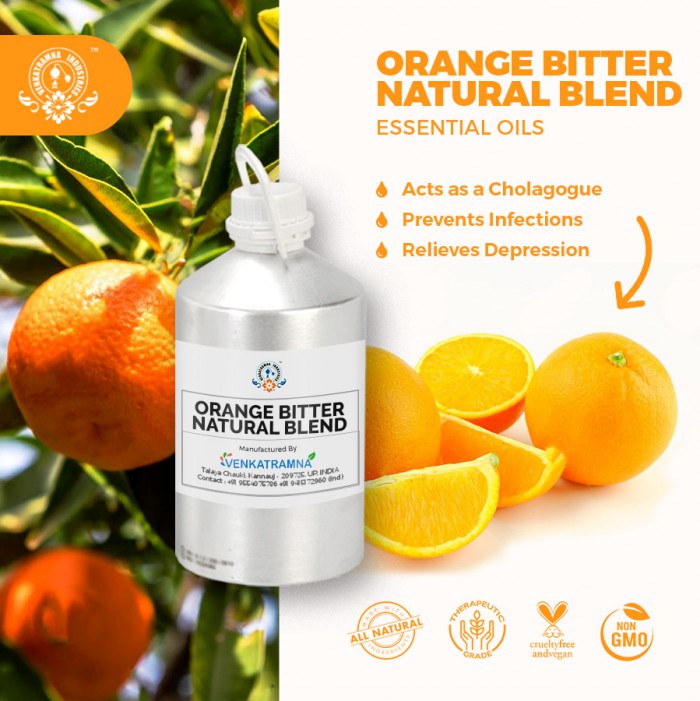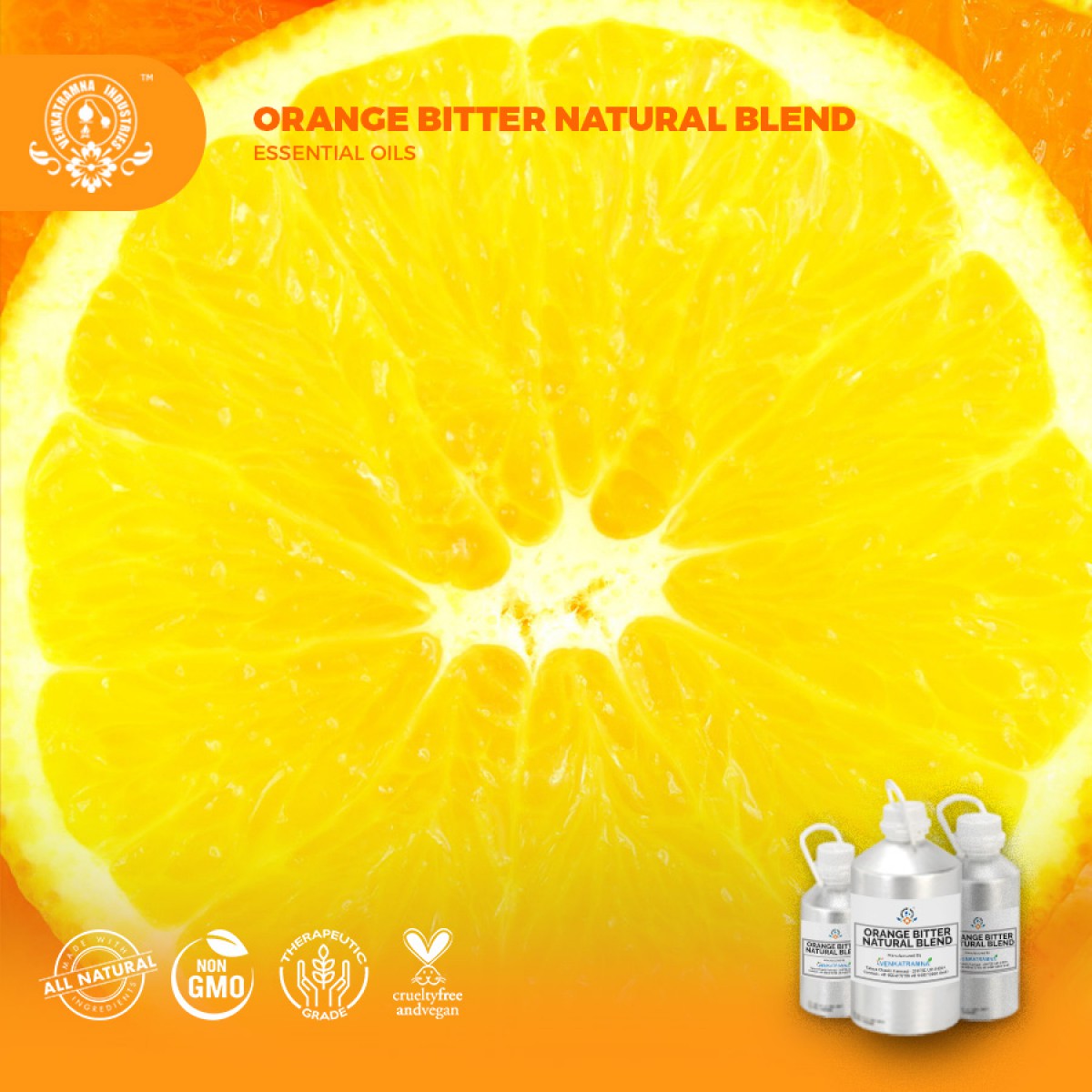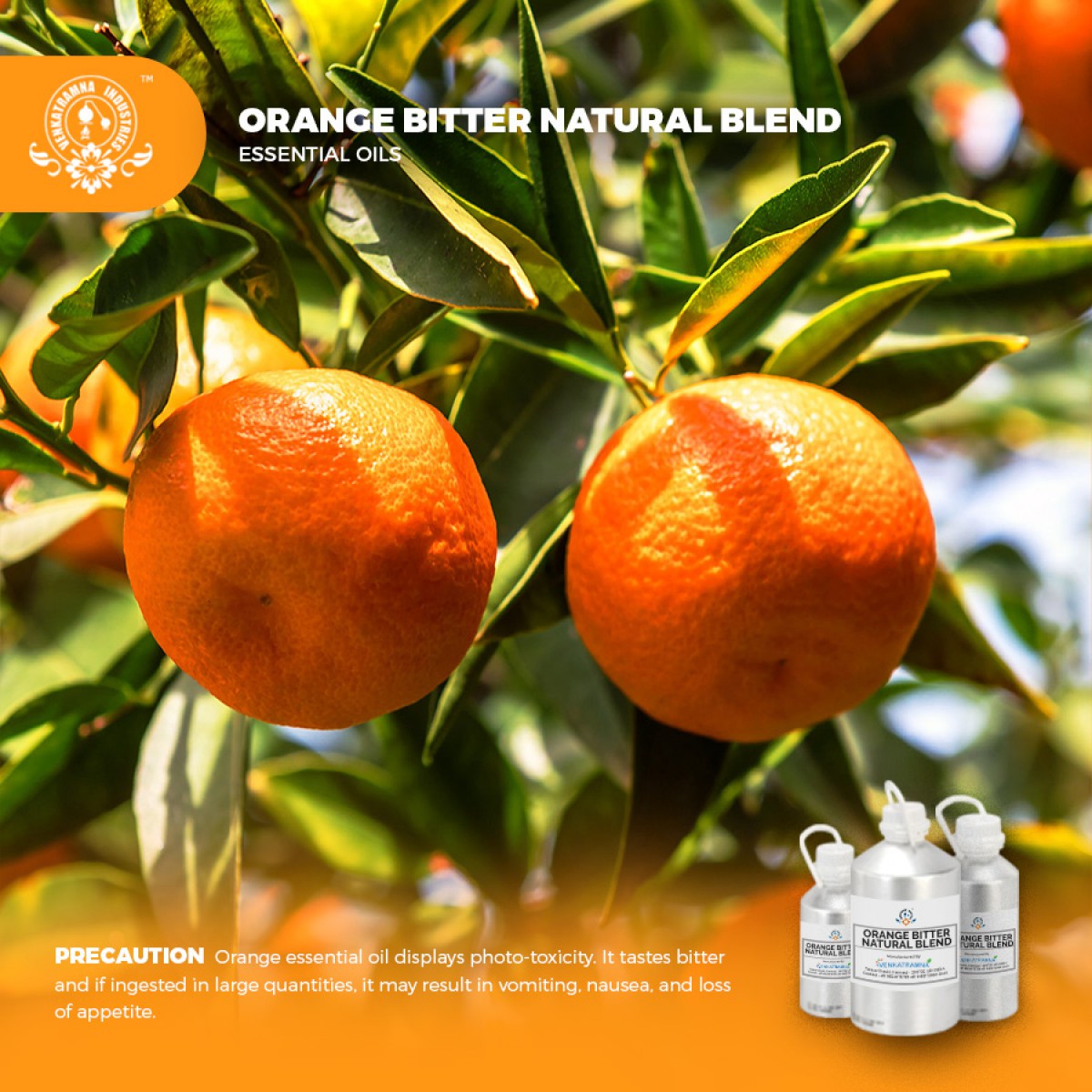Botanical Name: Citrus Aurantium Common name: Sweet orange, malta Read More
|
Botanical Name: |
Citrus
Aurantium |
|
Common name: |
Sweet orange,
malta |
|
Plant
family: |
Rutaceae |
|
Genus: |
Citrus |
|
Appearance/Color: |
Yellow to brownish green liquid with thin consistency |
|
Odor: |
Sweet
and citrus smell like the orange peels from which it is derived, with some
bitter notes similar to grapefruit; with medium aroma at a top note. |
|
Blends With: |
Clove Bud, Cinnamon Bark, Nutmeg, Sandalwood, Myrrh, Clary Sage,
Lemon, Bergamot, Lavender. |
|
Origin: |
Italy |
|
Source: |
Fruit Peel |
|
Method
of Extraction: |
Steam
Distillation |
Bitter
Orange tree is an evergreen which grows up to 30 feet high with glossy dark
green leaves and fragrant white flowers. The essential oil is produced by cold
pressing of the peel. The bitter orange is really a native plant of the exotic
regions within the Asian continent. Nowadays, the bitter orange is widely grown
like a plantation tree through the entire tropics as well as subtropical areas
of the world. Areas along the Mediterranean coast abound in orchards of the
bitter orange.
The bitter orange is discovered and prepared like a scent throughout the 16th century, supposedly by an Italian princess named Anna-Marie de Nerola; she utilized the oil to scent her gloves.
DISCLAIMER
The complete range of conditions
or methods of use are beyond our control therefore we do not assume any
responsibility and expressly disclaim any liability for any use of this
product. Information contained herein is believed to be true and accurate however,
all statements or suggestions are made without warranty, expressed or implied,
regarding accuracy of the information, the hazards connected with the use of
the material or the results to be obtained from the use thereof. Compliance
with all applicable federal, state, and local laws and local regulations
remains the responsibility of the user.
The FDA has not evaluated the
statements on this website. No claims are made by Venkatramna Industries as to
the medicinal value of any products from vriaroma.com or by us. The information
presented here is for educating our customers about the traditional uses of
essential oils and is not intended to diagnose, treat, cure, or prevent any
disease. You are responsible for understanding the safe application of these products.
If you have any questions, please call or email us for further information.
As per NAHA guidelines, New Directions Aromatics
(NDA) does not recommend the ingestion of essential oils. It is imperative to
consult a medical practitioner before using Essential Oils for therapeutic
purposes. Pregnant and nursing women and those taking prescription drugs are
especially advised not to use this product without the medical advice of a
physician. The oil should always be stored in an area that is inaccessible to
children, especially those under the age of 7.
The usage of
medicinal oranges is definitely the main domain of the Chinese herbalists,
who’re still the best enthusiasts of medicinal oranges and its particular
remedies today.
For more than thousands of years, bitter orange has
been used in traditional medicine for treating digestive problems like flatulence,
dyspepsia, constipation, sluggish digestion, loss of appetite, intestinal
gas, nausea, and indigestion.
It is used in
Ayurvedic medicine as an aid to meditation and is helpful in easing stress and
anxiety.
It is effective for treatment of poor digestion,
constipation and clearing congestion of the liver when used in massage blends.
The therapeutic properties of bitter orange include treatment of poor digestion,
constipation, and clearing congestion of the liver when used in massage blends.
On the emotional system bitter orange essential oil is extremely uplifting and
energizing for the body.
The
cleansing, stimulating and toning action of bitter orange essential oil makes
it ideal as lymphatic stimulants for treating oedema, cellulite or as part of a
detoxification program. Varicose veins and facial thread veins respond well to
this essential oil, especially when blended with perfect combination in facial
treatments. Some aromatherapists have had success treating acne with this oil,
perhaps due its antiseptic properties.
Bitter orange essential oil has been proven effective
in treating numerous skin problems with its antiseptic, antibacterial and
antifungal properties. The rind of this fruit from which its essential oil is
extracted contains non-bitter flavonoids, which is known to have considerable
properties to help in the drainage of veins.
Bitter orange essential oil is used in cosmetics. Bitter orange extracts
are also used in the treatment of cellulite as it has the potential to
normalize the affected parts and stimulate the cutaneous tone of the skin. Bitter
orange oil also acts as a natural antiseptic and aids in clearing acne,
cold sores, wounds, psoriasis, fungal infections like athlete’s
foot and ringworm, eczema and certain other skin problems.
COMMON
USAGE
·
Treats
skin problems
·
Enhances
the digestive mechanism
·
Assists
in weight-loss
·
Alleviates
stress and reduces anxiety
·
Acts
as a Cholagogue
·
Prevents
Infections
·
Relieves
Depression
·
Stimulates
Urination
·
Acts
as Tonic
·
Carminative
Properties
·
Treats
Alzheimer’s disease
Ingredients:
|
S.No |
Key Constituents |
Strength (%) |
|
1 |
(þ)-Limonene |
90.4–97.7 |
|
2 |
b-Myrcene |
1.5–3.6 |
|
3 |
Linalool |
0.2–1.0 |
|
Non-volatile
compounds |
||
|
4 |
Epoxy-bergamottin |
0.092 |
|
5 |
Bergapten |
0.039–0.078 |
|
6 |
Psoralen |
0.005 |
Safety Summary
·
Hazards: Skin
sensitization if oxidized; phototoxic (low risk)
·
Cautions:
Dermal -
If applied to the skin at over maximum use level, skin must not be exposed to
sunlight or sunbed rays for 12 hours.
Maximum
dermal use level 1.25% (for phototoxicity).
Organ Specific Effects
·
Adverse skin reaction: Undiluted bitter orange oil was moderately
irritating to rabbits and was very mildly irritating to mice; tested at 10% on
25 volunteers it was neither irritating nor sensitizing. In a study of 200
consecutive dermatitis patients, three (1.5%) were sensitive to 2% bitter
orange oil on patch testing. In a clinical trial, bitter orange oil was applied
to three groups of 20 patients each, at 20% in alcohol three times daily (group
1), at 25% in an emulsion three times daily, or 100% once daily for 1–3 weeks. The
patients were being treated for superficial dermatophyte infections, one of the
most common types of fungal skin conditions. There were no side effects, except
for “mild irritation” in group three. A 65- year-old aromatherapist with
multiple essential oil sensitivities reacted to 5%, but not 1% orange oil.
Autoxidation products of (þ)-limonene can cause skin sensitization. Distinct
phototoxic effects were found for bitter orange oil.
·
Reproductive toxicity: The low reproductive toxicity of (þ)-
limonene suggests that bitter orange oil is not hazardous in pregnancy.
Systemic
Effects
·
Acute
Toxicity: Non-toxic.
Bitter orange oil acute oral LD50 in rats >5 g/kg; acute dermal LD50 in
rabbits >10 g/kg.
·
Carcinogenic/anti carcinogenic potential: Orange oil was not mutagenic in the Ames
test, and did not produce CA in Chinese hamster fibroblasts (Ishidate et al
1984). Orange oil (type unspecified) significantly induced glutathione
S-transferase in mouse liver and small bowel mucosa and inhibited B[a]P-induced
neoplasia of both forestomach and lungs (Wattenberg et al 1985). Orange oil
(type unspecified) demonstrated a chemopreventive action in both
nitrosomethylurea-induced rat mammary carcinomas and N-nitrosodiethylamine-induced
preneoplastic hepatic lesions in rats (Bodake et al 2002, Maltzman et al 1989).
(þ)- Limonene displays anticarcinogenic activity (see (þ)-Limonene profile).
·
Drug interactions: Anticoagulant medication, because of
cardiovascular effects.
·
Ecotoxicity: No data available
·
Bioaccumulation: No data available
·
Mobility in soil: No data available
·
Persistence and degradability: No data available
·
PBT and vPvB assessment: No data available
· Avoid direct exposure into water streams and ground water sources.





 MSDS-Bitter_orange1.pdf
MSDS-Bitter_orange1.pdf




